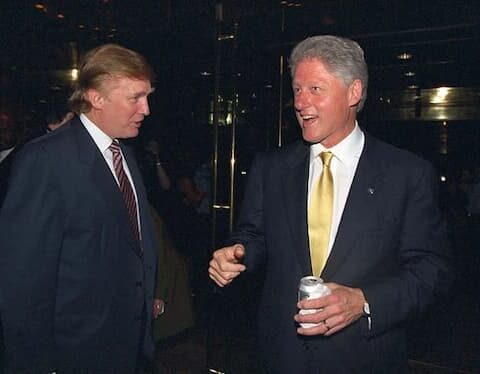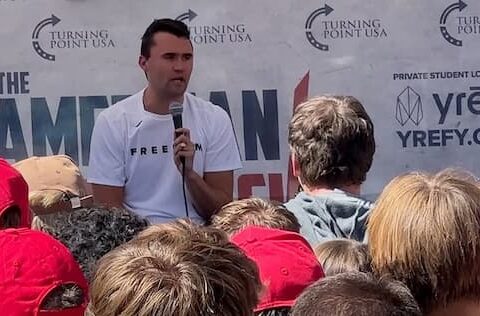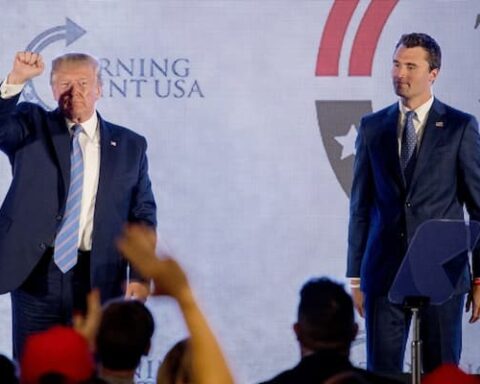If you’ve never heard of Smedley Butler, it wouldn’t be your fault.
But we all should have heard of him.
Let’s rewind 80 years or so and remember the case of the Retired Marine General Smedley Butler: what he did, what it meant and what the implications are.
Butler uncovered a plot by American businessmen and bankers – inspired by the Italian fascists and the Nazis in Germany – to seize power in the United States, overthrow President Roosevelt and install a fascist government.
With some in the media now sometimes framing the Trump movement and presidency in terms of ‘fascism’ (rightly or wrongly), it’s an interesting time to rewind back to the 1930s and the story of that foiled plot.
For one thing, it’s a historical warning about democracy’s and society’s need to be ever vigilant against such plots. And, for another, it raises the question of how often we, as societies or states, are – without even knowing it – on the brink of such plots or coups being carried out.
In 1934, the planned coup was foiled by Butler’s actions when the plotters sought to recruit him – mistakenly thinking that he would be in favor of the conspiracy.
Butler was one of the most decorated war heroes of his era: despite this, both the media and most of the public refused to believe his claims at the time, calling it a hoax. Referred to as the “White House Coup”, the “Wall Street Putsch” or the “Business Plot”, it was claimed to have originated with powerful business elites, including the DuPont family and Prescott Bush, among others (including links to the JP Morgan family): but the committee that was set up to investigate the plot did not make its findings public, thus protecting the identity of the plotters and helping cover up the reality of the plot.

It wasn’t until recent years that the findings were made public, validating Butler’s claims of a conspiracy.
What has never been clear – due, no doubt, to the cover-up and the refusal to make the official investigation’s findings public – was how close the 1930s fascist coup came to succeeding.
Would it have worked if Butler hadn’t gotten in the way?
And here’s the real question here: if Butler hadn’t been there to disrupt the plot – and if the ‘coup’ had succeeded – what would’ve been the consequences?
Well, the first point is that America might’ve had a fascist government: moreover, a fascist government that had seized power without any democratic mandate.
But we have to bear in mind that this was just a few years prior to the onset of World War II. So, had the ‘Business Plot’ succeeded, how would it have impacted the Second World War?
Well, on the surface of it, it would mean a 1930s American government that would’ve been more sympathetic to the fascists in Europe: and therefore would’ve been unlikely to side with Britain and co against Hitler or Mussolini. Unless a counter-coup had occurred, it would mean the United States would not have entered the war on Britain’s side.
The US would either have stayed out of it entirely – or, worse, it would’ve come into the war on the side of Germany and the fascists.
It would be a fascinating exercise in alternate history or alternate timelines to extrapolate the alternate course of history had the Americans been on the side of the fascists.
In that scenario, surely the Third Reich and its allies would’ve WON the Second World War?
In that enlarged context, the actions of one man – Smedley Butler – become all the more significant. And it raises the question: did Butler save, not just America, but the entire world…?
And, if so, is Butler the most important hero of the twentieth century? The man who’s actions – who’s judgement at a crucial moment – altered the course of history?
Certainly, the cover-up and the refusal to publish the investigation’s findings for so long have prevented Butler from being properly credited – and, remember, the media and the establishment at the time were basically calling Butler a hoaxer or a fantasist (though we now know better).
If it were in today’s language, they would be calling him a ‘conspiracy theorist’.
As is so often the case, the establishment media and officials acted to cover up the crimes of the wealthy elites and bankers (nothing new there) – and ridiculing Butler’s claims were part of that.
It’s also worth noting that another military figure, James E. Van Zandt, also reported that, mere weeks after Butler’s warnings, he too had been approached by ‘agents of Wall Street’ to lead a Fascist dictatorship in the United States under the guise of a ‘Veterans Organization’…’
While arguments could be had over how effective such a plot would’ve been, the danger was clearly real. And, actually, it’s less shocking that it might at first appear.
We know that sympathy towards Hitler, Mussolini and fascism wasn’t uncommon, including in Britain and the United States. Prior to the exposure of the scale of the Holocaust (which wouldn’t be until some years later) and prior to certain red lines being crossed (particularly the invasion of Poland), there was not any common consensus that the Nazis or the European fascists were necessarily the bad guys.

We know, for example, that the British Royals were, at least at one point, openly pro fascist and pro Nazi. We’ve seen the photos of the royals making Nazi salutes; and we know about Prince Philip being in Germany, seen mingling with Nazi officials.
And of course Edward VIII and his American wife Wallis Simpson were apparently Nazi sympathisers.
And that’s just scratching the surface – there’s obviously much more, the deeper you dig. And in America, there were such high-profile fascist sympathisers as Charles Lindbergh and Henry Ford, among others, including newspaper people, industrialists and – as the ‘Business Plot’ showed – wealthy families and banking interests.
At that point in time, there wasn’t an association of fascism or Nazism with genocide or war crimes: it was just another ideology or political movement.
At any rate, the the idea of a cabal of wealthy elites and business interests in the US wanting to overthrow Roosevelt and establish a fascist-style government isn’t far-fetched. And, even if subsequent findings hadn’t corroborated Butler’s central assertions, Butler himself was surely the most upstanding and reliable witness you could want – and it seems massively unlikely someone like him would’ve fabricated the entire thing.
Being pro-Nazi or pro-fascist wasn’t considered extreme at that point in time: and you can easily see certain powerful interests or parties seeing which way the wind was blowing in Europe and possibly deciding fascism was the new way forward.
What’s unsettling is to wonder how that applies (or doesn’t) today.
Because, today, the extreme-right is on the rise all across the Western world – more so than at any time since the 1930s. And worrying echos of 30s fascism have been cropping up all the time: at the level of propaganda, at the level of mob-based ‘populism’, at the level of political parties and maneuvering, and, yes, even at the level of wealthy business elites and their shady activities and plots.
Those wealthy families and cabals, now – just as in the 1930s – need to be scrutinised. Because there’s always the question of what they’re up to and what their interests are – even as the media and public attention is instead fixed on the ‘Populist’ mobs and street-level movements.
At any rate, you have to wonder what Smedley Butler would make of the Trump movement. Trump himself might not be a ‘fascist’, but you have to wonder about some of the interests around or behind him who might see him and his popular movement as just the right ticket. Certainly, Trump’s presidency, while swept into being on the energy of the ‘common people’, also involved wealthy interests and could be seen as the coup of the 1%.
And where Butler and Van Zandt once spoke of the ‘agents of Wall Street’ seeking a fascist coup, in the modern day, Trump would seem like a perfect Wall Street frontman to represent the needs and interests of the financial elites: even while playing out the act of serving the interests of the common man.
It’s always been worth remembering too that the original ‘America First’ movement was rooted in the 1930s and 40s and the nationalist resistance to involvement in World War II: which, though not in itself anything sinister, also came to be rightly or wrongly associated with American Nazi sympathisers and pro-fascists.
One thing is for certain: Smedley Butler should be a household name, much more famous than he currently is.




